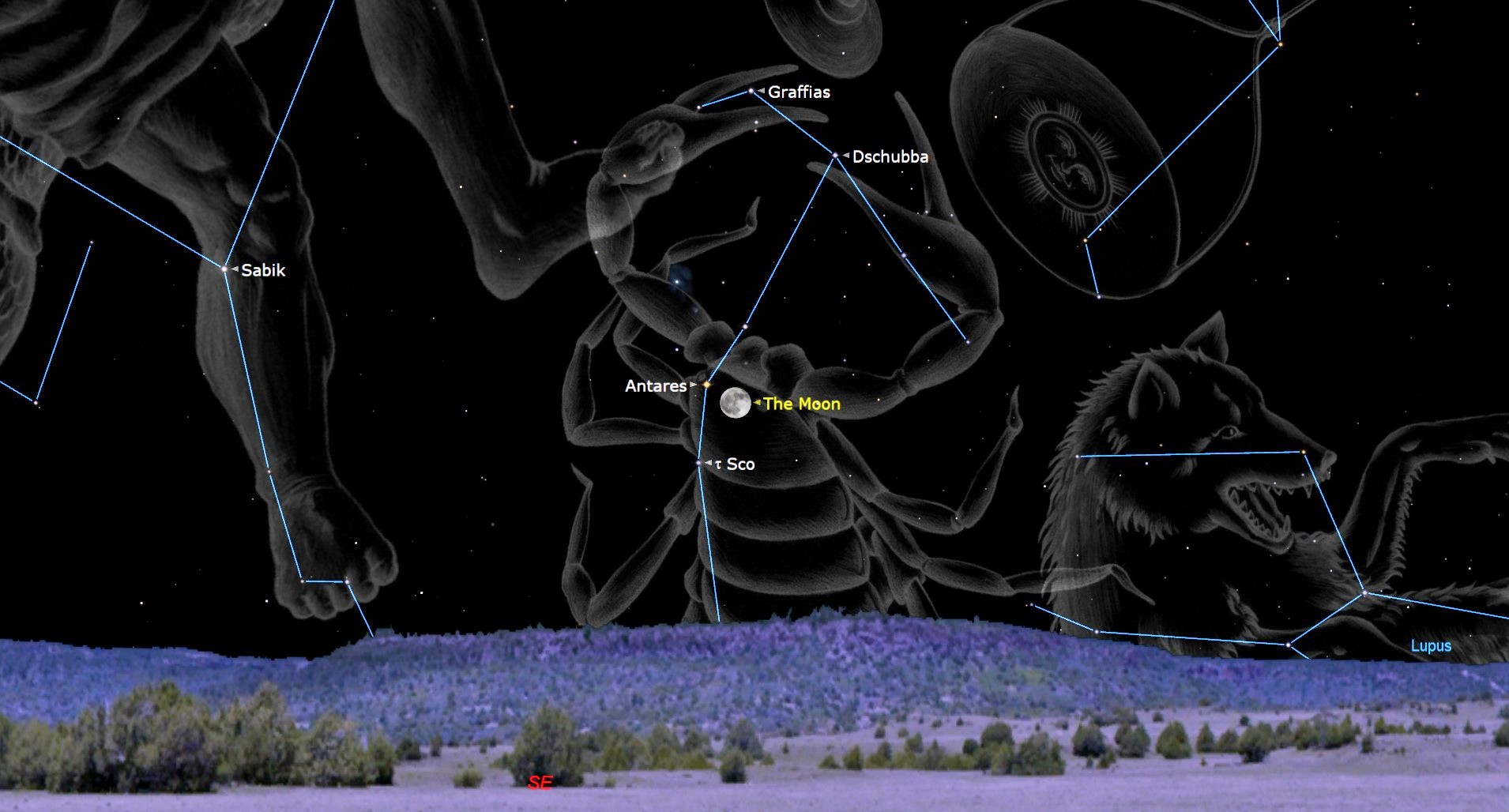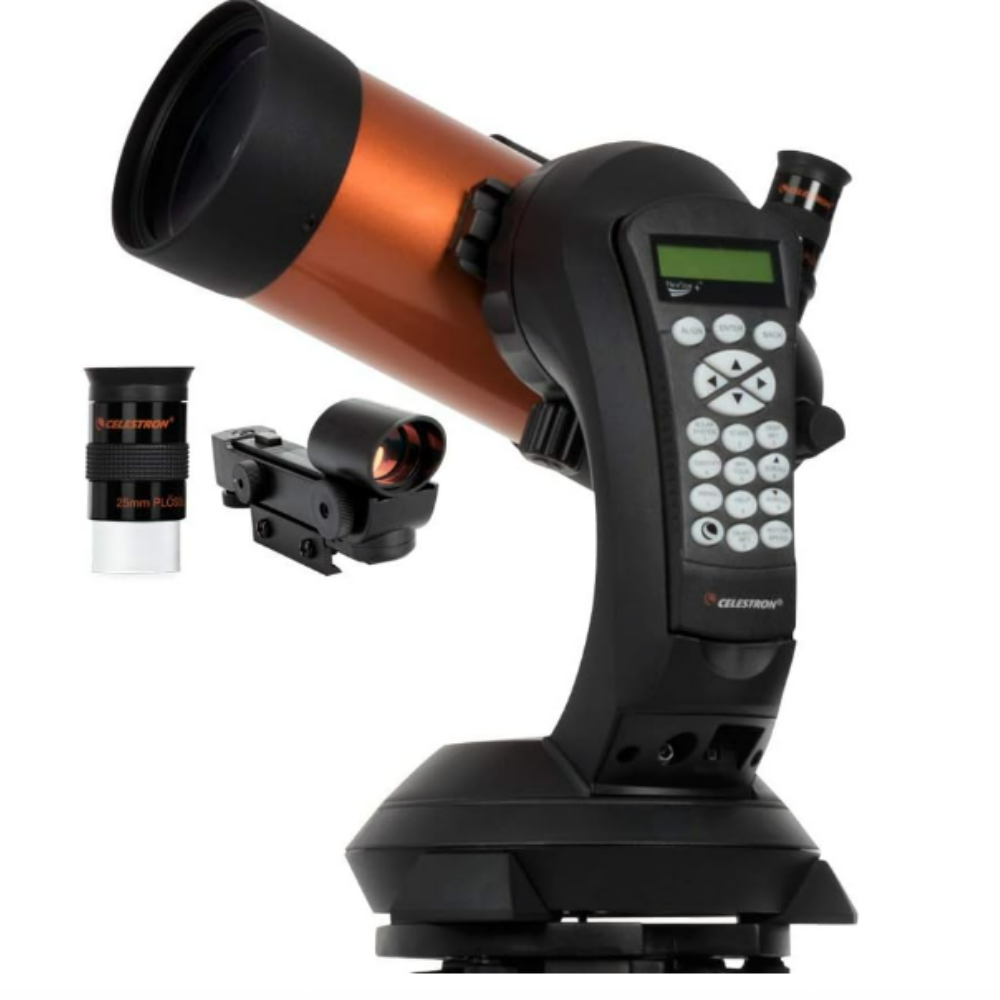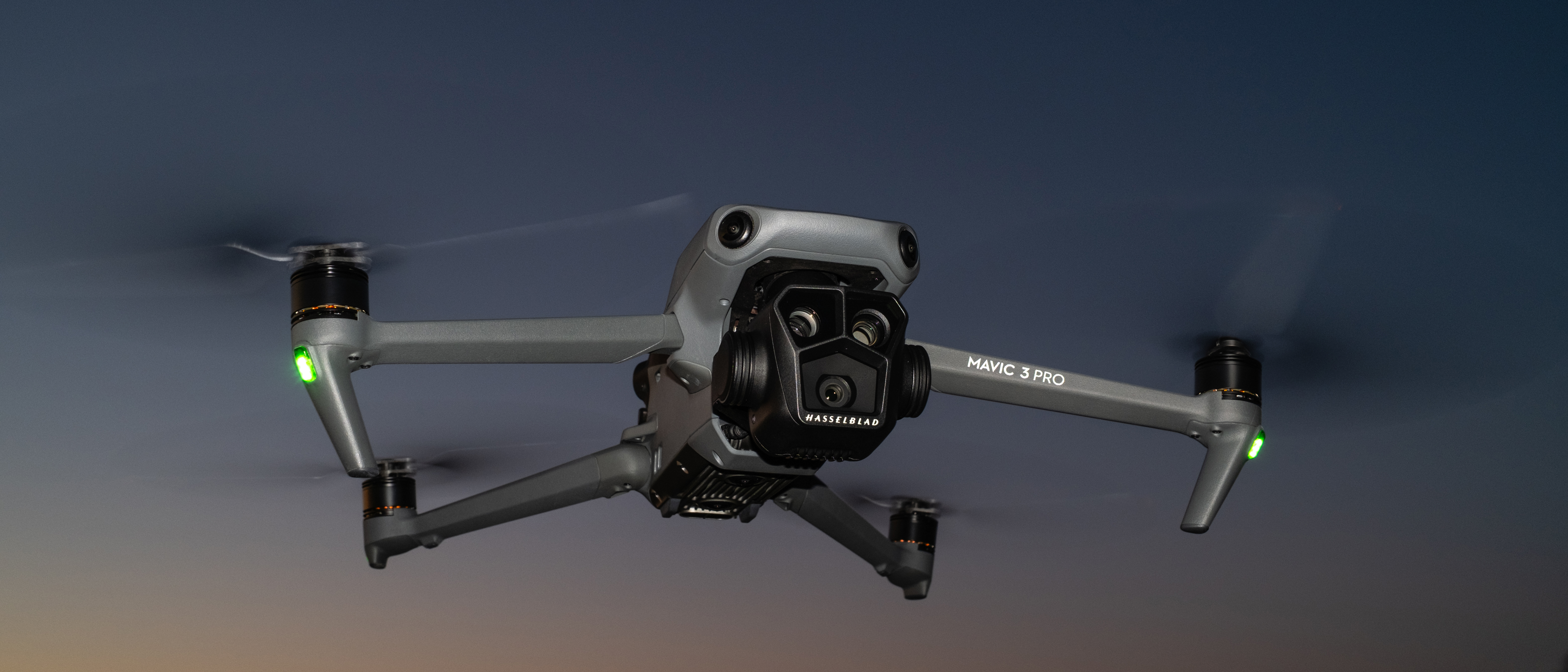Watch red supergiant star Antares shine close to the near-full moon on May 13
It's all a matter of perspective.

The moon will slide in front of the red supergiant star Antares on May 13, briefly blocking its light just a day after reaching its full "Flower Moon" phase.
Because the moon is relatively close to Earth, its apparent position against the background stars shifts depending on your location. That means the occultation, when the moon covers Antares, won't be visible everywhere.
Instead, skywatchers in a a handful of southern hemisphere countries including Argentina, Chile, Uruguay, and Brazil, will see the full show according to stargazing site in-the-sky.org. The exact timings and duration of the occultation will differ depending on your location, so be sure to check in-the-sky.org for information tailored to your locale.
Country/territory | Start (UTC) | End (UTC) |
Argentina | 03:31 | 05:24 |
Chile | 03:14 | 05:16 |
Brazil | 04:26 | 05:17 |
Antarctica | 04:36 | 05:39 |
In the U.S., skywatchers will be treated to an altogether different celestial show. On May 13, bright Antares will rise to the left of the waning gibbous moon in the southeastern sky, with just a few degrees of separation between the two celestial bodies. Moonrise will occur at 9:33 p.m. EDT (0133 GMT on May 14) for viewers in New York, for example, who will see Antares glowing to its lower left. As the night progresses, the pair will climb higher, with Antares moving above the moon by the time they set in the early morning hours.

Want to upgrade your gear and go crater hopping on the lunar surface? The Celestron NexStar 4SE is ideal for beginners wanting quality, reliable and quick views of celestial objects. For a more in-depth look at our Celestron NexStar 4SE review.
Antares is also known as the "heart of the scorpion", owing to its position at the core of the constellation Scorpius. It is about 700 times the diameter of our sun, yet only nine times as massive, according to the European Southern Observatory, giving it a remarkably low density. The star is nearing the end of its life and will eventually explode in a brilliant supernova.
Of course, the moon and Antares won't be the only celestial sights on May 13. The bright star Arcturus will be visible almost directly above the lunar disk at moonrise, while Vega shines in the east and the Big Dipper hovers near the zenith, pointing the way to Polaris.
Mars will appear in the constellation Cancer in the western sky, while Jupiter will lurk close to the horizon, setting just a few hours after the sun.
Breaking space news, the latest updates on rocket launches, skywatching events and more!
The Messier 4 globular cluster will be positioned close to Antares and the moon throughout the night, though the light cast out from its 100,000 stars, will be swamped by the light of the near-full moon.
Night sky enthusiasts looking to explore the cataclysmic history of violence in the craters and dark Maria marking the lunar surface should check out our guide to viewing the lunar surface. Looking to upgrade your gear? Then our guides for the best binoculars deals and the best telescope deals can be of assistance.
Editor's Note: If you capture a photo of the moon and Antares and would like to share it with Space.com's readers, then send your photo(s), comments, and your name and location to spacephotos@space.com.
Join our Space Forums to keep talking space on the latest missions, night sky and more! And if you have a news tip, correction or comment, let us know at: community@space.com.

Anthony Wood joined Space.com in April 2025 after contributing articles to outlets including IGN, New Atlas and Gizmodo. He has a passion for the night sky, science, Hideo Kojima, and human space exploration, and can’t wait for the day when astronauts once again set foot on the moon.
You must confirm your public display name before commenting
Please logout and then login again, you will then be prompted to enter your display name.
